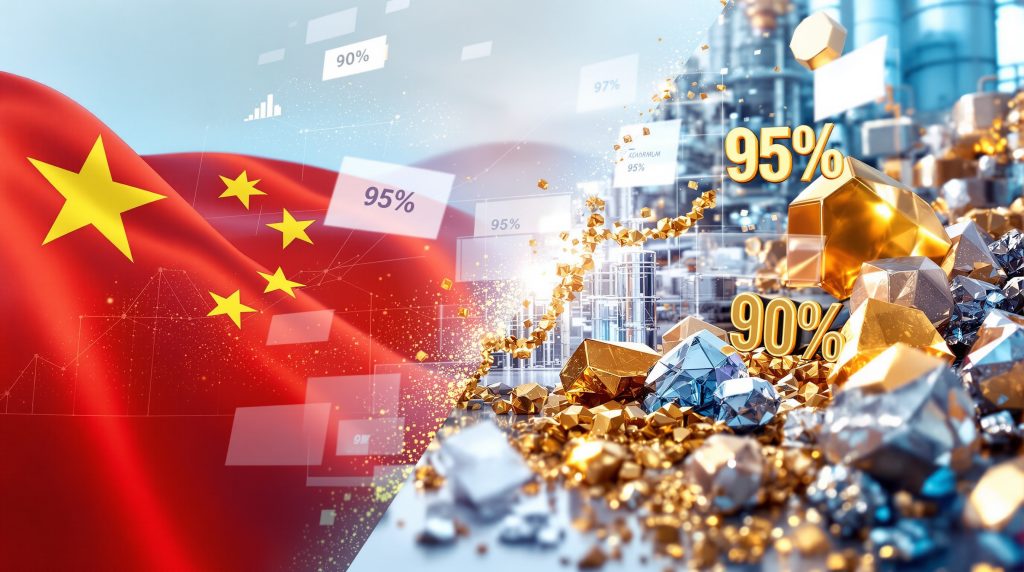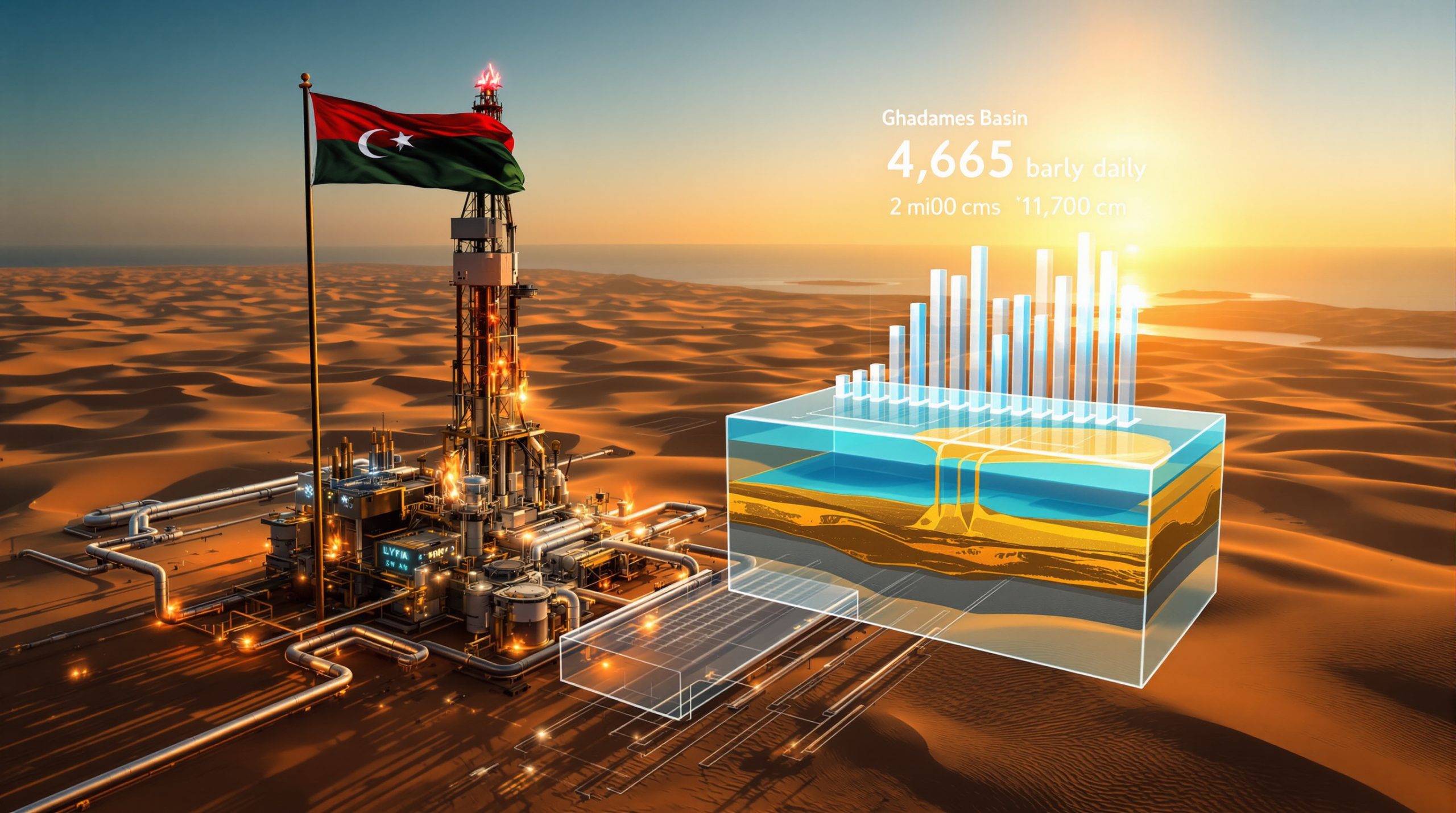Beijing rare earth export restrictions have created significant uncertainty in global markets following China's October 30, 2025 announcement, which many interpreted as a complete elimination of export controls. However, this critical minerals energy transition policy adjustment represents a tactical rollback rather than a strategic reversal of China's control mechanisms over global supply chains.
Understanding Beijing's Latest Rare Earth Export Policy Changes
Rather than restoring pre-2024 export conditions, China's latest policy adjustment merely returned controls to the restrictive licensing framework originally implemented in April 2024. This distinction proves crucial for understanding the actual scope of policy changes and their implications for global supply chains.
The October 2025 Announcement – What Actually Changed
The April 2024 licensing system established several key control mechanisms that remain in place:
• State-mandated production quotas limiting total domestic rare earth output
• Comprehensive end-use disclosure requirements for all international buyers
• National security screening processes for transactions involving critical materials
• Case-by-case approval protocols under China's national security legislation
Furthermore, Beijing's rare earth export restrictions continue to operate through a sophisticated multi-layered approach designed to maintain strategic leverage while avoiding complete market disruption. The licensing system requires foreign purchasers to provide detailed documentation regarding intended applications, with particular scrutiny applied to materials destined for defense, aerospace, or advanced manufacturing sectors.
Current Export Control Framework Still in Place
Chinese producers must obtain Ministry of Commerce approval before executing export contracts, with approvals contingent on compliance with production quotas and end-use certification requirements. This framework ensures that Beijing retains ultimate authority over rare earth material flows, regardless of temporary policy adjustments.
Consequently, the current critical minerals strategy must account for these persistent control mechanisms when planning supply chain resilience.
How Do China's Rare Earth Restrictions Actually Work?
China's rare earth export control architecture operates through an interconnected system of production quotas, licensing requirements, and national security assessments that collectively maintain Beijing's strategic influence over global supply chains.
The Licensing System Breakdown
The current licensing framework requires exporters to navigate multiple approval stages before completing international transactions:
| Control Mechanism | Pre-April 2024 | Current System (2025) |
|---|---|---|
| Export Quotas | Annual volume limits | State-mandated production quotas |
| Licensing Requirements | Limited screening | Comprehensive case-by-case review |
| End-Use Documentation | Basic declarations | Detailed application disclosure |
| National Security Review | Minimal oversight | Extensive screening protocols |
| Approval Timeline | 2-4 weeks | 4-8 weeks (estimated) |
The licensing process involves several critical stages:
- Producer registration with Chinese export authorities
- Quota allocation based on state production targets
- Contract submission with detailed buyer information
- National security assessment of intended applications
- Final approval contingent on compliance verification
Critical Materials Under Enhanced Scrutiny
Beijing applies particularly stringent controls to rare earth elements essential for high-performance magnet production and advanced technology applications. These materials receive enhanced scrutiny due to their strategic importance in defence critical materials and emerging technology sectors.
Neodymium-Praseodymium (NdPr) alloys face comprehensive export screening given their critical role in permanent magnet manufacturing for electric vehicles, wind turbines, and defense systems. Chinese authorities require detailed end-use certification for all NdPr exports exceeding specified purity thresholds.
Heavy rare earth elements, particularly dysprosium and terbium, remain subject to case-by-case approval processes due to their scarcity and importance in high-temperature magnetic applications. These elements prove essential for advanced electric motor designs and military equipment, making them strategic commodities under Beijing's export control regime.
The distinction between light rare earth elements (LREEs) and heavy rare earth elements (HREEs) proves crucial for understanding China's control strategy:
• LREEs (cerium, lanthanum, praseodymium, neodymium): More abundant, facing moderate restrictions
• HREEs (dysprosium, terbium, yttrium): Scarcer resources, subject to enhanced controls
• Critical alloys (NdPr, DyTb): Highest restriction levels due to strategic applications
Extraterritorial Reach of Beijing's Controls
China's rare earth export restrictions extend beyond direct bilateral transactions through sophisticated control mechanisms that affect global manufacturing networks. The Foreign Direct Product Rule (FDPR) application creates compliance obligations for companies using Chinese rare earth materials in their production processes, regardless of geographic location.
Under current regulations, products containing as little as 0.1% Chinese-origin rare earth content may face export restrictions if destined for specific end uses or customers. This threshold creates significant compliance challenges for international manufacturers who must trace rare earth origins throughout their supply chains.
Critical Consideration: The extraterritorial reach of Beijing's controls means that Western manufacturers cannot simply diversify suppliers to avoid Chinese restrictions. They must fundamentally restructure their supply chains to eliminate Chinese rare earth dependencies.
Why China Still Controls Global Rare Earth Supply Chains
Despite periodic policy adjustments and international diversification efforts, China maintains overwhelming dominance across critical stages of rare earth processing and manufacturing. This control stems from decades of strategic investment in processing infrastructure rather than simply mineral resource endowments.
The Numbers Behind China's Market Dominance
China's rare earth supremacy becomes apparent when examining processing capacity rather than mining statistics. While several countries possess significant rare earth reserves, China has systematically developed the industrial infrastructure necessary to convert raw materials into usable products.
| Processing Stage | China's Share | Rest of World | Key Facilities |
|---|---|---|---|
| Rare Earth Mining | 60% | 40% | Bayan Obo (Inner Mongolia), Mt. Weld (Australia) |
| Concentrate Processing | 85% | 15% | Baotou, Ganzhou facilities |
| Oxide Separation | 90% | 10% | Inner Mongolia complex |
| Metal/Alloy Production | 95% | 5% | Integrated smelting facilities |
| Sintered Magnet Manufacturing | 95% | 5% | Ningbo, Dongying industrial parks |
These statistics reveal that China's rare earth dominance increases at each successive processing stage. While countries like Australia, Brazil, and the United States possess substantial rare earth reserves, they lack the industrial capacity to convert these resources into finished products.
Geographic concentration within China further compounds supply chain vulnerabilities:
• Inner Mongolia accounts for approximately 60% of China's separated oxide capacity
• Sichuan Province specialises in heavy rare earth processing, particularly dysprosium and terbium
• Jiangxi Province processes ionic rare earth deposits and hosts growing magnet manufacturing capacity
Mid-Stream Processing: The Real Bottleneck
The transformation of rare earth concentrates into separated oxides represents the most critical bottleneck in global supply chains. This chemical conversion process requires sophisticated infrastructure, specialised expertise, and significant capital investment that few countries have successfully developed outside China.
Chemical conversion complexity explains why mid-stream processing remains concentrated in China despite abundant global rare earth reserves. The separation of individual rare earth elements requires:
• Solvent extraction systems with dozens of separation stages
• Specialised chemical reagents and waste treatment facilities
• Process engineering expertise accumulated over decades
• Environmental management systems for radioactive and toxic waste streams
Capital requirements for new oxide separation facilities create substantial barriers to entry. Recent feasibility studies suggest that modern rare earth processing plants require:
- Initial capital investment: $300-500 million for commercial-scale facilities
- Construction timeline: 3-5 years from permitting to production
- Technical expertise: Specialised metallurgical and chemical engineering capabilities
- Environmental compliance: Comprehensive waste treatment and disposal systems
Western Capacity Limitations
Current rare earth processing capabilities outside China remain severely limited, creating structural dependencies that cannot be resolved through short-term policy initiatives or market mechanisms.
United States processing capacity consists primarily of:
• Mountain Pass mine (California): Produces rare earth concentrate but lacks oxide separation capacity
• Pilot-scale facilities: Small demonstration projects insufficient for industrial supply chains
• Research initiatives: Government-funded development programmes with multi-year timelines
Allied nation capabilities provide limited alternatives:
• Australia (Lynas Rare Earths): Operates Malaysia-based processing facility with capacity constraints
• European Union: Minimal processing infrastructure despite substantial research funding
• Japan: Advanced magnet manufacturing but limited raw material processing
The Missing Links: Western rare earth supply chains lack integrated processing capabilities spanning concentrate-to-magnet production stages, creating vulnerabilities that persist regardless of mining development.
In addition, these developments highlight broader mining industry evolution challenges facing Western nations attempting to establish competitive processing capabilities.
What Does the Pentagon's $700M Investment Strategy Tell Us?
The U.S. Department of Defence's substantial investment in domestic rare earth processing capabilities reflects strategic recognition that supply chain security requires long-term infrastructure development rather than reliance on temporary export policy changes.
Vulcan Elements and ReElement Technologies Funding Rationale
Pentagon investments through the Defence Production Act target specific bottlenecks in domestic rare earth processing capabilities. These strategic funding decisions focus on mid-stream processing gaps that create structural dependencies on Chinese supply chains.
Vulcan Elements receives funding to develop oxide separation capabilities within the United States, addressing the critical conversion stage from rare earth concentrates to separated oxides. This investment recognises that domestic mining operations remain incomplete without corresponding processing infrastructure.
ReElement Technologies focuses on rare earth recycling and urban mining capabilities, developing technologies to recover rare earth materials from end-of-life products. This approach provides supply diversification whilst addressing environmental concerns associated with primary mining operations.
The Defence Production Act loan structure provides several strategic advantages:
• Patient capital with longer repayment timelines than commercial financing
• Strategic coordination between government requirements and private sector capabilities
• Risk sharing for technologies with uncertain commercial viability
• Supply chain integration linking domestic processing with defence procurement
Long-Term Supply Chain Insulation Goals
Pentagon rare earth investments pursue comprehensive supply chain development rather than addressing immediate shortages. The strategic timeline extends across multiple decades, reflecting the complexity of building alternative processing infrastructure.
Oxide separation facility development represents the highest priority investment area. These facilities would provide domestic capability to convert rare earth concentrates from Mountain Pass and other potential mines into separated oxides suitable for magnet manufacturing.
Metal reduction capacity expansion addresses downstream processing requirements. Converting separated oxides into metallic rare earth alloys requires additional specialised infrastructure currently concentrated in China.
Recycling infrastructure investments offer complementary supply sources whilst reducing environmental impacts. Urban mining of rare earth materials from electronic waste could provide 20-30% of domestic requirements within a decade.
Risk Management Versus Market Timing
Defence Production Act investments represent strategic hedging against supply chain vulnerabilities rather than reactions to immediate market conditions. This approach recognises that industrial infrastructure development requires multi-year timelines incompatible with short-term policy responses.
Strategic Rationale: Government backing makes economic sense regardless of temporary export policy changes because rare earth processing infrastructure provides long-term strategic value independent of current trade conditions.
Industrial time lag considerations justify continued investment despite temporary policy relaxation:
• Facility construction requires 3-5 years minimum timeline
• Technology development involves multi-year research and optimisation phases
• Supply chain integration necessitates coordination across multiple processing stages
• Market development requires time to establish customer relationships and quality certifications
Strategic stockpile programmes complement processing capacity investments by providing buffer inventory during facility development periods. These stockpiles ensure supply continuity whilst domestic processing capabilities reach commercial scale.
How Should Investors Interpret Rare Earth Export Headlines?
Rare earth market analysis requires distinguishing between temporary policy adjustments and structural supply chain changes. Investors who react to export policy headlines without understanding underlying capacity constraints often misinterpret market signals and investment opportunities.
Distinguishing Policy Noise from Structural Changes
Short-term price volatility typically accompanies export policy announcements as traders respond to perceived supply availability changes. However, these price movements rarely reflect fundamental supply-demand dynamics or long-term market trends.
Long-term capacity constraints remain unchanged regardless of temporary export policy adjustments. China's processing infrastructure advantages and Western capacity limitations persist independent of current regulatory frameworks.
| Policy Event | Initial Price Impact | 6-Month Price Movement | Structural Change |
|---|---|---|---|
| 2010 Export Quota Reduction | +300% (NdPr) | +200% sustained | Minimal diversification |
| 2019 Trade War Threats | +50% (basket) | -10% (normalisation) | Accelerated R&D funding |
| 2024 Licensing Implementation | +40% (HREEs) | +15% sustained | Policy uncertainty |
| 2025 Partial Rollback | -25% (immediate) | TBD | Temporary adjustment |
Historical price patterns demonstrate that export policy changes create temporary market disruption without resolving fundamental supply chain dependencies. Sustained price increases require actual capacity additions rather than policy modifications.
Investment Signals Worth Monitoring
Defence Production Act funding announcements provide reliable indicators of government commitment to supply chain diversification. These investments reflect strategic priorities independent of current trade conditions.
EXIM guarantee programmes for critical minerals projects indicate official support for domestic processing development. Export-Import Bank guarantees reduce project financing costs and demonstrate policy continuity across political cycles.
Allied nation capacity development initiatives create investment opportunities in friendly countries with rare earth resources. Australia, Canada, and European projects benefit from strategic partnerships and preferential financing arrangements.
Key indicators for tracking genuine supply chain development:
• Facility construction milestones for oxide separation plants
• Technology licensing agreements between Western companies and Chinese processors
• Long-term supply contracts between mines and processing facilities
• Government procurement commitments for domestically processed materials
The "Nine-Inning Game" Perspective
Rare earth supply chain transformation represents a multi-decade strategic competition requiring sustained investment and policy commitment. Current market conditions and policy adjustments constitute early-stage developments in a much longer transformation process.
Hypothetical scenario analysis: If China completely eliminated all Beijing rare earth export restrictions tomorrow, Western supply chain development would continue due to strategic vulnerabilities and economic considerations. Government investments target supply security rather than current market access.
Western capacity building rationale extends beyond current trade disputes:
• Strategic autonomy in critical technology supply chains
• Economic resilience against future policy changes
• Technology development capabilities in advanced materials
• Environmental standards for sustainable resource processing
Long-term strategic competition implications suggest that Beijing rare earth export restrictions will remain geopolitically significant regardless of temporary diplomatic improvements. Investment strategy components should reflect this strategic context rather than current policy conditions.
What Are the Broader Geopolitical Implications?
Beijing's rare earth export restrictions operate within broader frameworks of strategic competition and economic interdependence that extend far beyond immediate trade considerations. Understanding these dynamics proves essential for interpreting policy changes and investment implications.
Trade Deal Dynamics and Temporary Suspensions
Late 2025 trade developments between the United States and China include temporary arrangements affecting rare earth export licensing. These agreements provide general licences for specific end users whilst maintaining underlying control structures.
General licence validity creates compliance complexities for international suppliers who must navigate overlapping regulatory frameworks. U.S. end users may receive preferential treatment whilst third-country customers face continued restrictions.
Conditions triggering renewed restrictions include:
• Technology transfer disputes involving advanced manufacturing processes
• Defence procurement policies affecting Chinese technology companies
• Strategic alliance developments between U.S. and allied nations
• Domestic political pressure in either country regarding trade relationships
Allied Nation Response Strategies
Australia's critical minerals strategy emphasises rare earth processing development through partnerships with allied nations. Recent investments focus on oxide separation capabilities and advanced materials research.
European Union raw materials security initiatives include substantial funding for domestic processing capacity and strategic stockpile development. The Critical Raw Materials Act provides regulatory frameworks supporting supply chain diversification.
Japan and South Korea diversification efforts concentrate on technology development and recycling capabilities. These nations leverage advanced manufacturing expertise to develop alternative supply sources and improved efficiency technologies.
Coordinated allied responses include:
• Minerals Security Partnership initiatives linking resource development across friendly nations
• Technology sharing agreements for rare earth processing innovations
• Joint procurement programmes creating demand certainty for alternative suppliers
• Research collaboration frameworks advancing recycling and substitution technologies
Future Policy Scenarios
Escalation pathways could include expanded export controls covering additional materials or more stringent approval processes. Economic pressure from trade disputes might prompt Beijing to restrict exports to specific countries or end users.
De-escalation possibilities involve gradual normalisation of export procedures whilst maintaining underlying control structures. China may provide preferential treatment to certain trading partners or specific applications.
| Scenario | Probability | Impact on Supply | Western Response |
|---|---|---|---|
| Full Export Reopening | Low | Temporary price reduction | Continued capacity development |
| Status Quo Maintenance | High | Moderate restrictions | Accelerated investment |
| Enhanced Restrictions | Moderate | Severe supply constraints | Emergency policy measures |
| Targeted Country Bans | Moderate | Selective disruption | Allied coordination |
Long-term strategic competition suggests that Beijing rare earth export restrictions will remain areas of geopolitical tension regardless of temporary diplomatic improvements. Investment and policy decisions should account for potential future restrictions rather than current conditions.
According to China's new rare earth and magnet restrictions, these controls threaten U.S. defence supply chains. Furthermore, the European Union faces similar challenges as China's suspension of rare earth export controls extends to EU markets.
Frequently Asked Questions About Beijing's Rare Earth Controls
Are Chinese rare earth exports completely banned?
No, Chinese rare earth exports continue under a licensing system that requires case-by-case approval for international transactions. The October 2025 policy adjustment relaxed restrictions compared to emergency measures but maintained significant control mechanisms including production quotas, end-use disclosure requirements, and national security screening processes.
How do the current restrictions affect magnet manufacturers?
Magnet manufacturers face supply chain uncertainties and potential cost increases due to licensing delays and approval uncertainties. Companies requiring neodymium-praseodymium alloys and heavy rare earth elements must provide detailed end-use documentation and accept longer procurement timelines. Some manufacturers are developing alternative supply relationships or investing in recycling capabilities to reduce Chinese dependencies.
What alternatives exist to Chinese rare earth supplies?
Limited alternatives currently exist for processed rare earth materials. Australia's Lynas Rare Earths provides some separated oxides, whilst recycling operations recover materials from electronic waste. However, these sources supply less than 10% of global processed rare earth requirements. New processing facilities in the United States and allied nations remain under development with multi-year construction timelines.
Will Western rare earth projects become profitable?
Western rare earth processing projects may achieve profitability through government support programmes, strategic procurement contracts, and supply security premiums. Defence Production Act loans provide favourable financing terms, whilst strategic stockpile purchases offer demand certainty. However, commercial viability depends on sustained policy support and protection from Chinese competitive pricing.
How long will it take to build alternative supply chains?
Comprehensive alternative supply chains require 5-10 years minimum for development. Oxide separation facilities need 3-5 years construction time, whilst integrated mine-to-magnet supply chains involve additional complexity. Technology development, environmental permitting, and workforce training extend development timelines. Recycling operations may provide interim supply sources within 2-3 years.
Key Takeaways for Industry Stakeholders
Beijing rare earth export restrictions will likely remain a persistent feature of global supply chains regardless of temporary policy adjustments. Industry stakeholders should develop long-term strategies accounting for continued supply chain vulnerabilities and gradual Western capacity development.
For Manufacturers and End Users
Supply chain risk assessment should evaluate dependencies on Chinese rare earth materials throughout product lifecycles. Companies should map rare earth content across component suppliers and identify critical vulnerability points.
Contract negotiation considerations under current controls include:
• Force majeure clauses addressing export restriction scenarios
• Alternative supplier qualification requirements and timelines
• Price escalation mechanisms reflecting supply chain uncertainties
• Strategic inventory levels balancing carrying costs with supply security
Alternative sourcing strategy development requires multi-year planning horizons and relationship building with emerging Western suppliers. Companies should participate in government-supported supply chain initiatives and consider vertical integration opportunities.
For Investors and Analysts
Policy commitment indicators provide more reliable investment signals than short-term export policy changes. Track Defence Production Act funding levels, strategic stockpile purchases, and allied nation capacity development initiatives.
Signal vs. Noise: Focus on facility construction milestones, technology licensing agreements, and long-term supply contracts rather than diplomatic announcements and temporary policy adjustments.
Timeline expectations for capacity development should reflect industrial realities rather than political pressures. Commercial-scale rare earth processing facilities require 5-7 years from initial investment to production, with additional time for market development and customer qualification.
Investment evaluation criteria should emphasise:
• Government support levels and policy continuity indicators
• Technology differentiation and intellectual property positions
• Strategic partnerships with defence agencies and allied governments
• Management expertise in complex industrial development projects
Strategic Planning Considerations
Hedging strategies against supply disruption should combine multiple approaches including strategic inventory, supplier diversification, recycling investments, and material substitution research. No single approach provides complete protection against rare earth supply vulnerabilities.
Technology development priorities for rare earth efficiency include:
• Recycling technologies for end-of-life product recovery
• Substitution research for critical applications
• Efficiency improvements reducing rare earth content requirements
• Processing innovations enabling smaller-scale economic production
Partnership opportunities in allied nations offer access to favourable financing, regulatory support, and strategic procurement contracts. Companies should evaluate joint venture possibilities with Australian, Canadian, and European partners developing rare earth capabilities.
The transformation of global rare earth supply chains represents a generational investment opportunity requiring patience, strategic vision, and recognition that current policy conditions constitute only the early stages of much longer structural changes. Success will depend on sustained commitment to capacity development rather than tactical responses to temporary policy adjustments.
Ready to Capitalise on Critical Minerals Market Volatility?
Beijing's rare earth export restrictions create ongoing market volatility and strategic investment opportunities in critical minerals sectors. Discovery Alert's proprietary Discovery IQ model delivers instant notifications when ASX-listed companies announce significant mineral discoveries, particularly in critical materials sectors experiencing supply chain disruption, enabling subscribers to identify actionable opportunities whilst the broader market remains focused on geopolitical headlines and policy noise.




